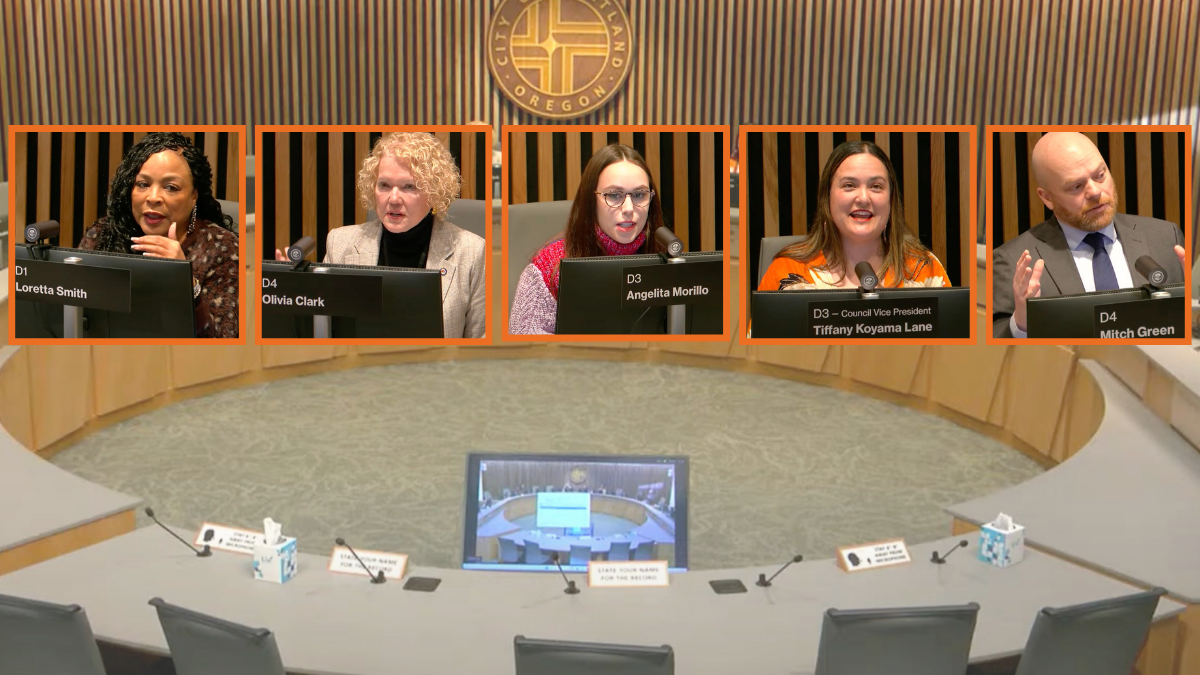If you care about Portland’s troubling transportation budget situation, the first-ever meeting of City Council’s new Transportation & Infrastructure Committee offered good news and bad news. We heard serious funding warnings, got some hope that they’ll be taken seriously, and heard what key councilors want to prioritize going forward.
Let’s start with the bad news: the Portland Bureau of Transportation has a $38 million deficit (this is separate from the city’s $100 million deficit) and it comes on the heels of six years of significant cuts. After listening to presentations from PBOT Director Millicent Williams and Deputy City Administrator for Public Works Priya Dhanapal on Monday, T & I Committee Chair Olivia Clark offered this blunt assessment: “I think it would be irresponsible — if not even criminal — of us to not address these issues because they concern our health and safety every single day of every person who lives in Portland.”
“Thinking about the very real consequences of that under-investment is what keeps me up at night,”
– Millicent Williams, PBOT director
“It would be irresponsible — if not even criminal — of us to not address these issues.”
– Olivia Clark, city councilor and committee chair
If PBOT is forced to cut $38 million from its budget the impact would be profound. Director Williams told the five members of the T & I Committee that, “We will never be able to return to proactively maintaining roadways, bridges, signals, street lights and sidewalks — much less meet the policy goals that you, the council, set for us.” “Thinking about the very real consequences of that under-investment is what keeps me up at night,” Williams continued. “Assets failing, safety compromised, livability diminished, public trust destroyed.”
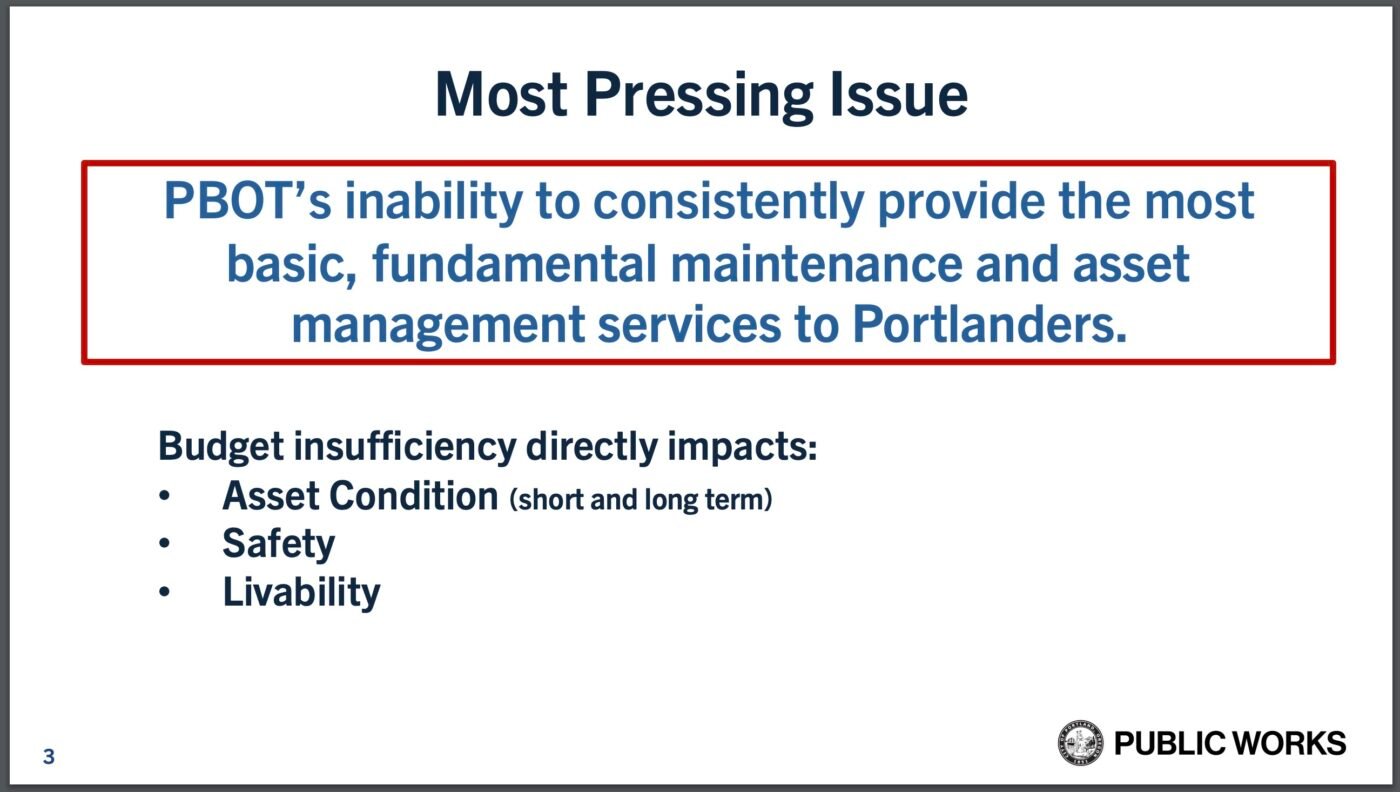
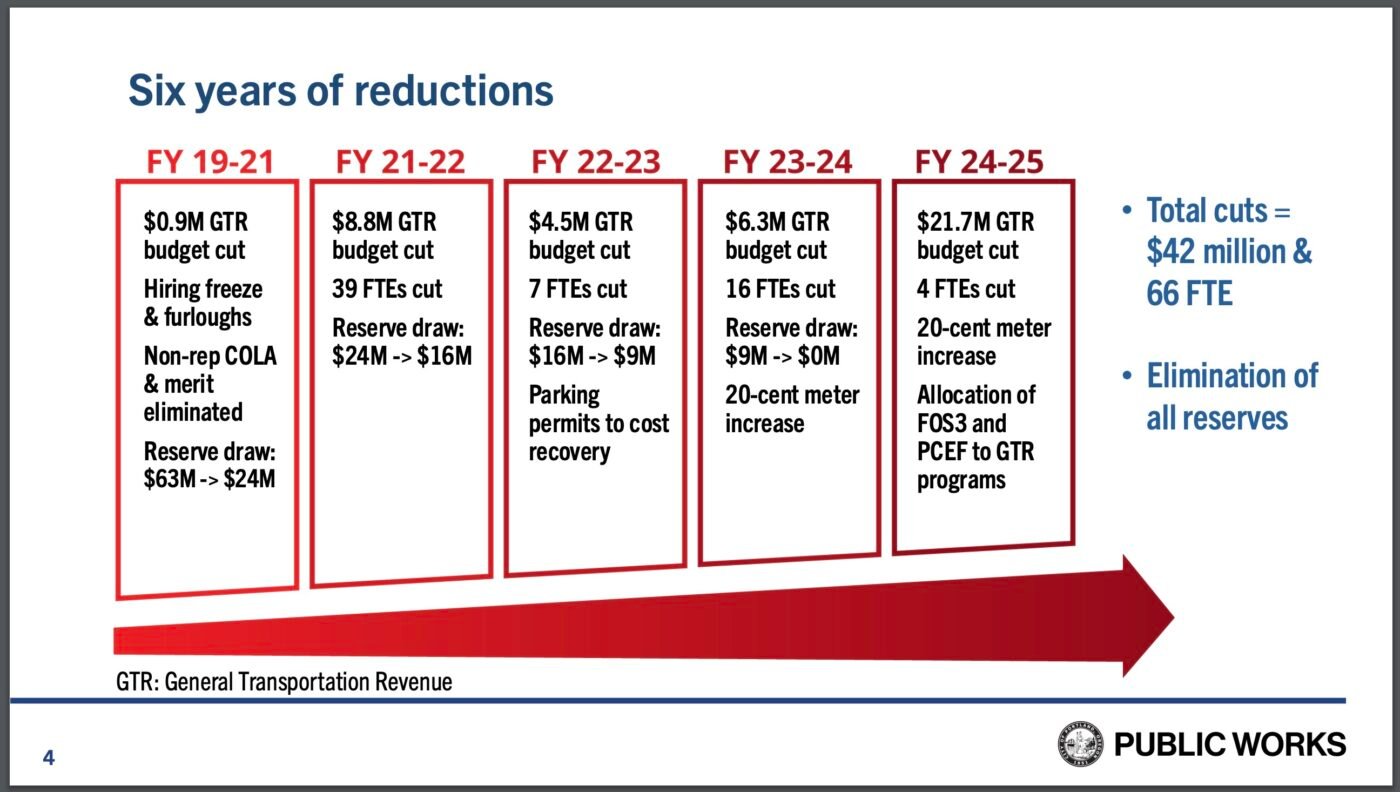
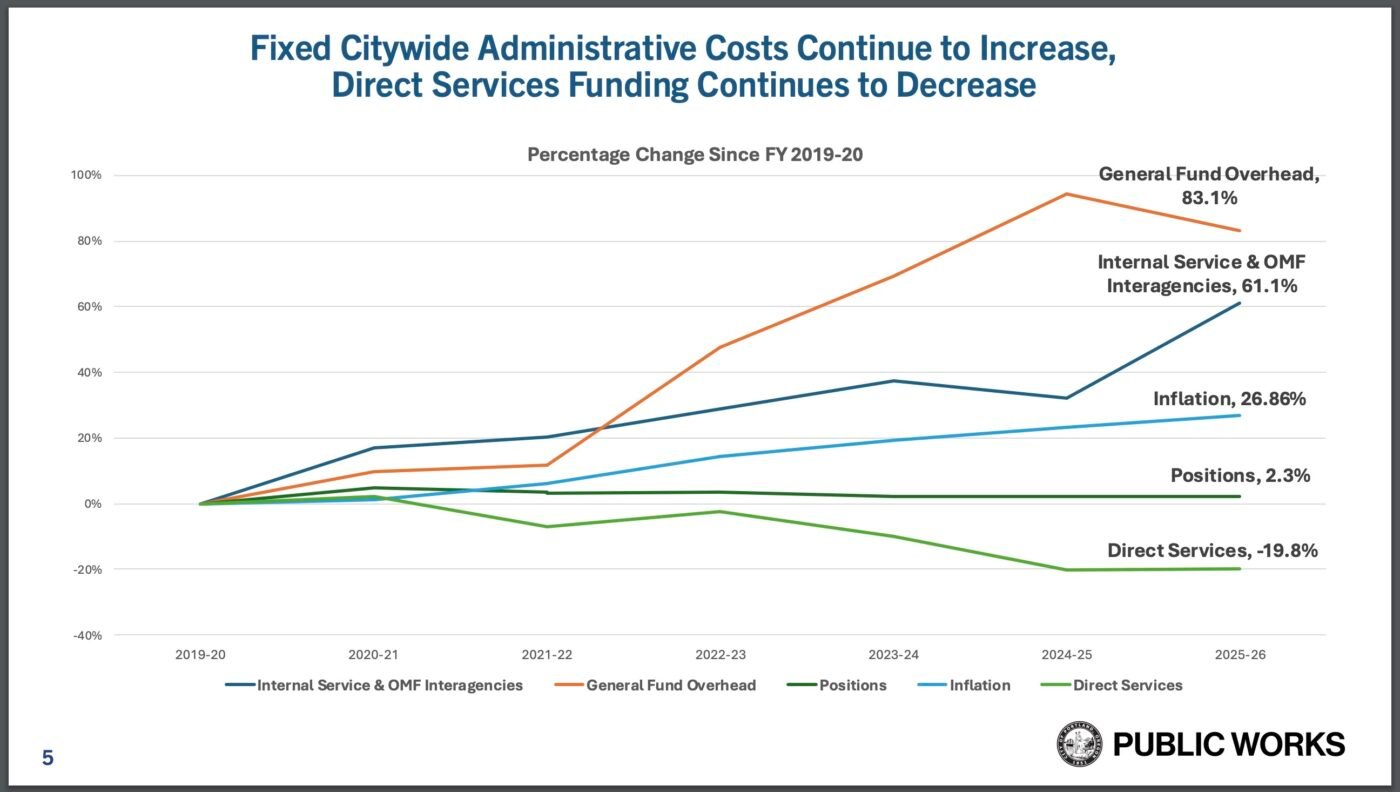

PBOT is reeling in large part because the city’s General Fund starves the bureau’s budget of valuable discretionary dollars. Nearly three-fourths of PBOT’s $600 million annual budget (about $415 million) is tied up as grants (or other set-aside obligations) and must be spent on specific projects. Currently less than 1% of the General Fund flows to the Public Works service area despite the agencies within it (PBOT, Water, and Environmental Services) being responsible for 90% of the city’s built assets. Dwindling revenue from fuel sales and parking meters has also contributed to the funding deficit.
And past political decisions have come due: About 30 years ago, City Council established the Utility License Fee (ULF), a fee paid by companies that place infrastructure in the public right-of-way. 28% of that fee was supposed to flow to the transportation bureau. But year-after-year the ULF was carved into for the General Fund and used as a City Council piggy bank. “That funding source, which would account to about $30 million a year,” Director Williams said at Monday’s meeting, “has decreased to zero.”
Ideological and illegal funding actions by the Trump Administration have added to anxiety around PBOT’s budget. Williams told councilors that an estimated $115 million in grant funds are, “in suspense right now as we continue to understand what will be happening at the federal level.”
Despite all that doom-and-gloom, the fact that a candid and in-depth conversation about the budget is happening at all is reason for optimism. The T & I Committee is a component of Portland’s brand new form of government that never existed in the past. It gives councilors an opportunity to get educated by staff (and by the public) and discuss issues outside of regular City Council meetings.
Former City Commissioner Chloe Eudaly, writing in her “Street Wonk” newsletter this week, shared that the committees, “represent a radical departure from how policy has historically been developed at City Hall.” Here’s more from Eudaly on how the new committees differ from the old process:
“In the past, commissioners worked behind the scenes, relying on city attorneys for guidance and engaging in shuttle diplomacy between offices. Unless there was significant public outreach—which often wasn’t the case—the public had little opportunity to weigh in before a nearly finalized proposal came before council for a first reading. Because those meetings could be lengthy and contentious, councilors had limited ability to genuinely deliberate or meaningfully address concerns raised by their colleagues or the public. Amendments could be proposed and passed, but the process didn’t always yield the best possible outcome.”
At Monday’s meeting, Bureau of Fleets and Facilities Director Maty Sauter echoed Eudaly’s sentiments. During her presentation about why the city faces such a challenge when it comes to asset management and the $13 billion maintenance backlog, Sauter said, “I think it’s also important to acknowledge the institutional element of this. [The bureaus and their assets] were also managed by basically five separate CEOs. Some of them really didn’t really have a background in infrastructure before they were making decisions about what to do with their funding. And so I think there’s a sense on on the part of City Administrator [Michael] Jordan that charter reform is the right moment — this is the time when we can start thinking about how we do things comprehensively.”
So while we face a historic funding cliff, we also face a historic opportunity to do something about it. That work will begin in the T & I Committee.
At the outset of Monday’s meeting they were given a chance to share their top priorities. District 3 Councilor Angelita Morillo said addressing dangerous corridors like Cesar E Chavez Boulevard and 82nd Avenue is her top priority. Morillo also said she wants to make sure that, “Our infrastructure across the city is physically changed… to slow our streets down.” Part of her vision is also to, “think about closing more neighborhood streets, making them more pedestrian friendly.” Morillo said her vision for transportation includes having more kids feeling safe enough to play outside. She also mentioned her “big dreams for Sandy Boulevard” that include a rapid transit line or a bike lane on the diagonal thoroughfare that’s been teed up for big changes next year.
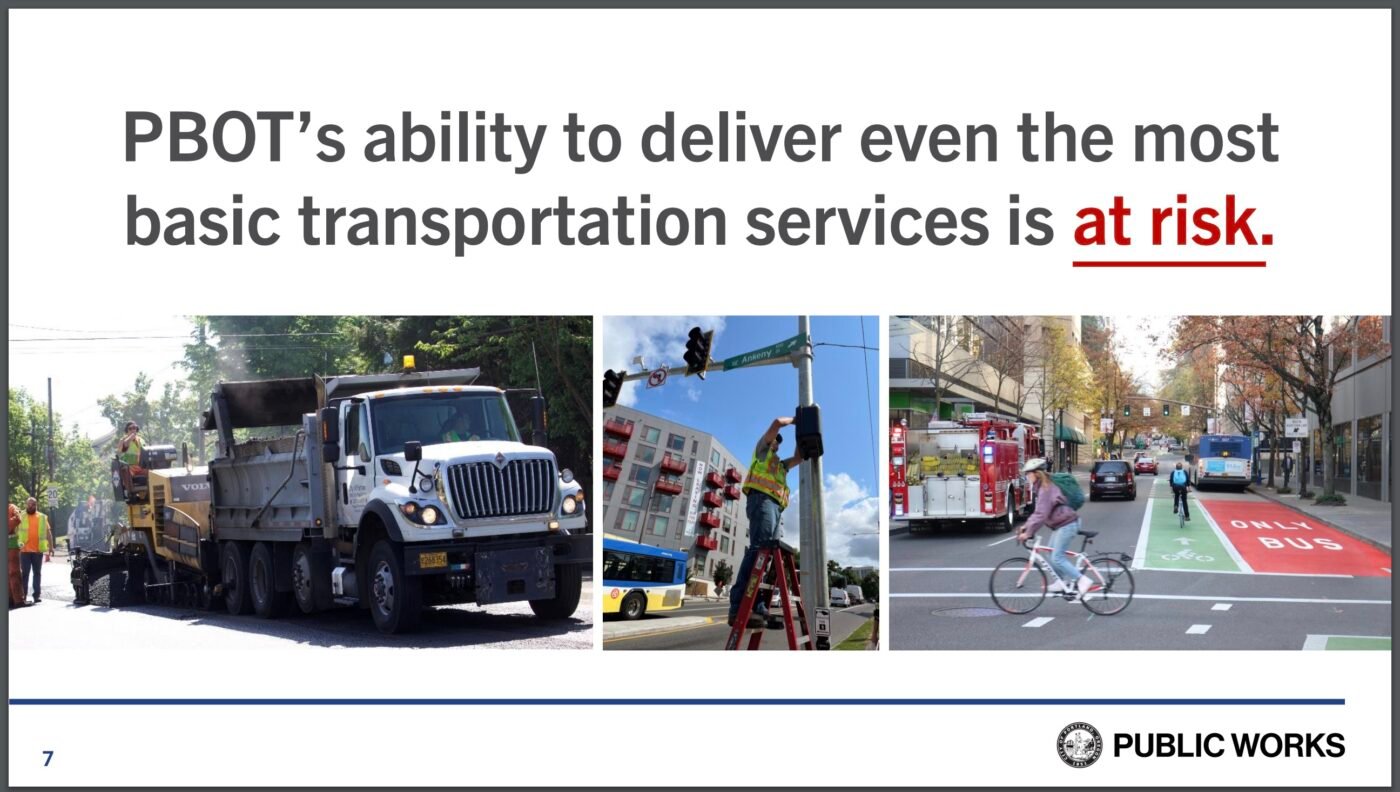
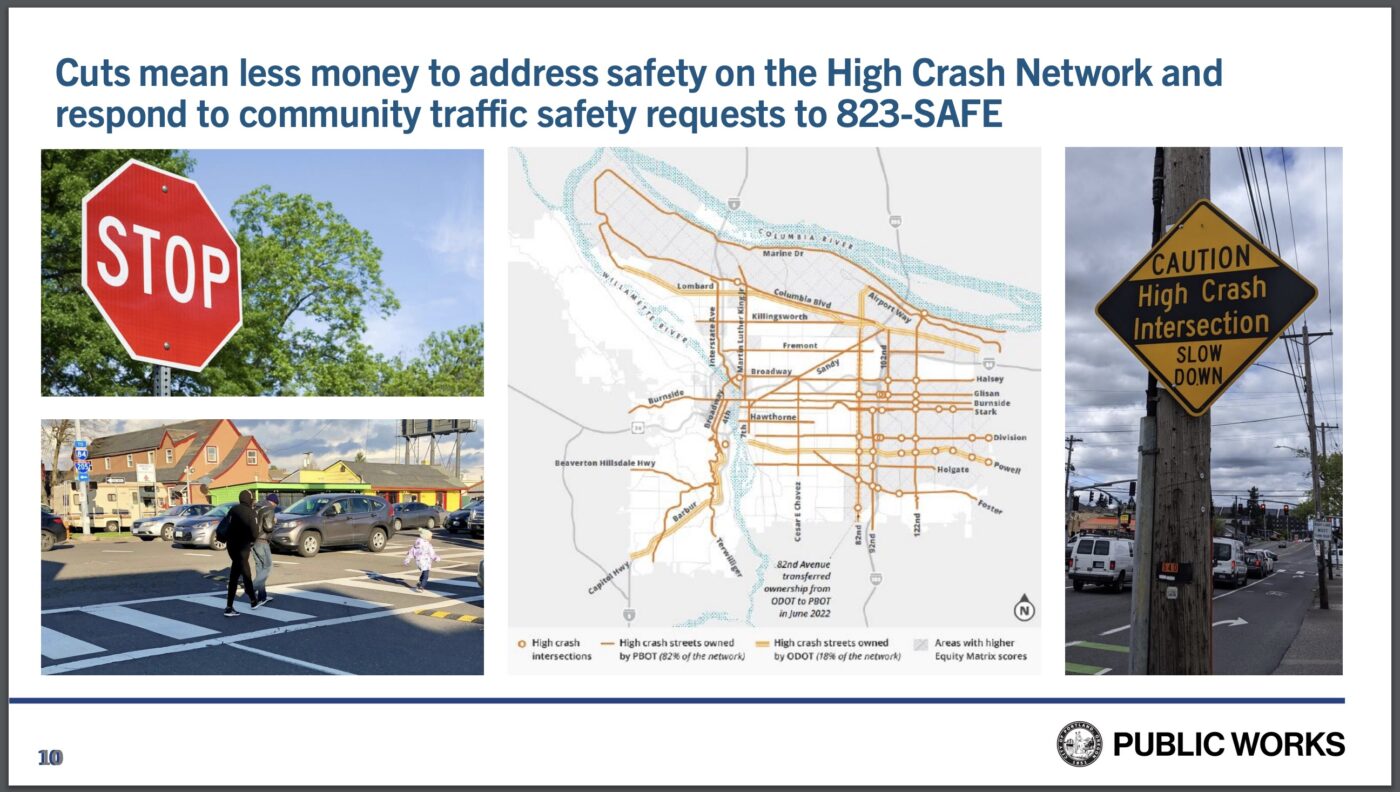
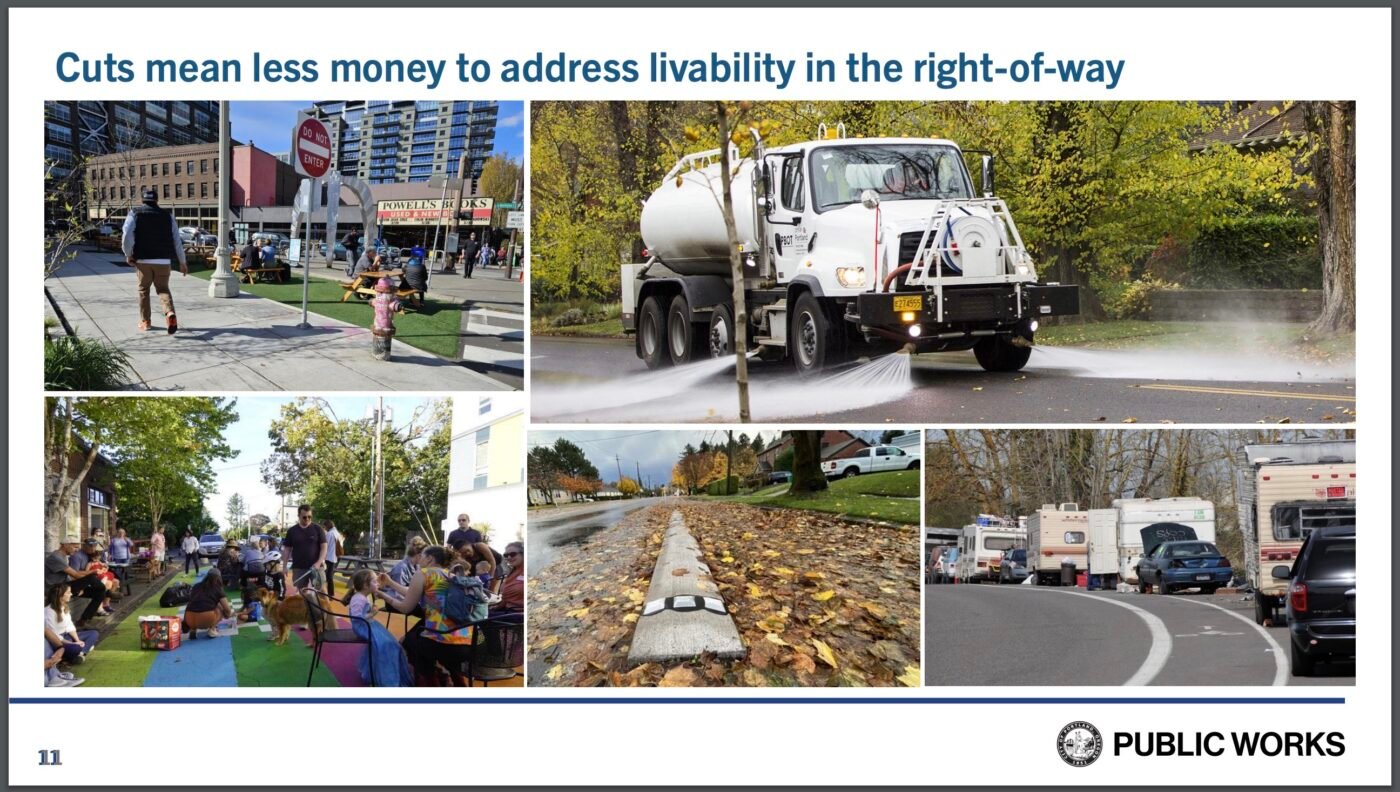
District 4 Councilor Mitch Green said having sound infrastructure is, “the foundation of the value of the regional economy,” and added that he wants to focus on financing and funding as the “big lynchpin” of his vision. Green said he will prioritize bringing more complete infrastructure to parts of the city like east Portland (District 1) and southwest and also mentioned the value of investing in 15-minute cities and mixed-use density like what local planning advocates refer to as, “four floors and corner stores.” “This is an opportunity for us to think about the west and east parts of the city as having a common cause,” he said.
District 3 Councilor Tiffany Koyama Lane said she wants to work toward, “decreasing traffic violence” and mentioned streets like Cesar Chavez, SE Division, 82nd, Powell and Sandy. Koyama Lane called out her interest in pushing for increased visibility around intersections in the form of “daylighting” — a treatment where parking next to the corner is prohibited. She also mentioned the need for safer routes to school, how her family is a regular participant in their school’s bike bus and that safe streets are also essential for older Portlanders. “There’s that slogan from Portlandia that this is a place ‘where young people go to retire.’ We also want Portland to be a place where people can stay and retire, and can age here, and can do that safely and with dignity,” she said.
Committee Chair Olivia Clark was busy taking notes throughout the meeting and said she’s putting together a work plan based on what she’s heard so far. Clark will also be listening at the next T & I meeting set for February 24th where a deep-dive on PBOT is planned and there will be considerable time set aside for public comment.
The T & I Committee meets the second and fourth Monday of each month from 9:30 a.m. to 11:30 a.m. Learn more on the committee website.

